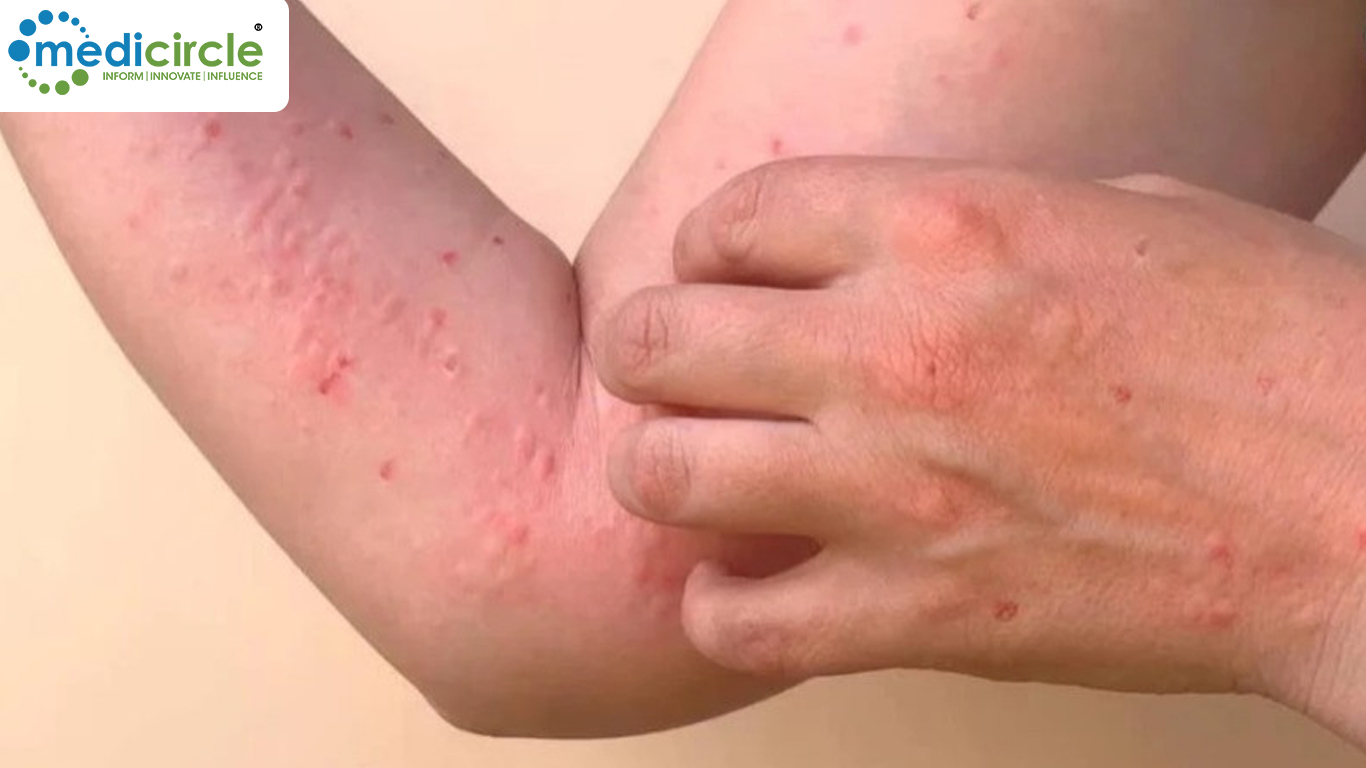In the bustling city of Chennai, a seemingly healthy month-old baby girl developed a peculiar and pconcerning condition shortly after birth. Dark patches began to form around her tiny nose, raising alarm among her family. What appeared to be a rare skin condition was eventually linked to a common, yet often misunderstood, viral infection: chikungunya. This newly observed symptom, dubbed Black Nose Disease or Chik Sign, has garnered the attention of medical professionals, creating a wave of concern and curiosity in India.
Chikungunya is a viral disease primarily spread by the Aedes mosquito. The infection often strikes without warning, presenting sudden high fevers, excruciating joint pain, headaches, muscle pain, and rashes that typically follow the fever. Although it is not considered life-threatening, the effects of chikungunya can be debilitating, with joint pain lasting for months in some cases.
For years, chikungunya has been a persistent health challenge in India, particularly in urban areas where standing water provides ideal breeding grounds for mosquitoes. While chikungunya has long been recognized for its painful symptoms, the appearance of this new sign—Black Nose Disease—has introduced an unexpected twist to the understanding of the virus’s impact, especially in infants and young children.
The Curious Case of the Month-Old Baby in Chennai: In this particular case, a baby girl developed what is now known as post-chikungunya hyperpigmentation. Just a few weeks after birth, her mother, who had been diagnosed with chikungunya during pregnancy, noticed something unusual: dark, flat, speckled patches appeared on the baby’s nose. These spots, while unsettling in appearance, were not accompanied by any severe health issues. Doctors soon identified this as a harmless but visually striking symptom—one that has now been labeled “Black Nose Disease.”
For a 15-day-old infant, this diagnosis came after the baby exhibited irritability and a mild fever. The child’s condition, though alarming to her family, did not worsen, and the only treatment prescribed was the use of a simple moisturizer. The dark spots, according to doctors, would fade with time, and no further medical intervention was necessary.
But what exactly is Black Nose Disease? And why is it happening?
Black Nose Disease, medically referred to as post-chikungunya hyperpigmentation, is an emerging symptom of chikungunya that has primarily affected the noses of infants like the baby girl in Chennai. The condition manifests a few weeks after the initial fever subsides, characterized by dark, flat, speckled pigmentation across the nose. This hyperpigmentation is not dangerous and does not cause pain or discomfort, but it can persist for several months before gradually disappearing.
In this particular case, the pigmentation was linked to the baby’s mother contracting chikungunya just before giving birth. The virus may have influenced the baby's immune response or skin sensitivity, resulting in this unique reaction. However, despite its unusual presentation, medical experts have confirmed that Black Nose Disease poses no serious health risks. Moisturizing the affected area is typically the only treatment required, and the pigmentation usually fades after several months.
This relatively harmless outcome is a relief to families who may be concerned about their child’s health. However, the appearance of Black Nose Disease adds to the already complex symptoms of chikungunya, further complicating the understanding of how this virus behaves in different individuals, particularly newborns.
For decades, India has been fighting with chikungunya outbreaks, especially in its urban and semi-urban areas. The disease has a seasonal pattern, often flaring up during the monsoon months when mosquito populations surge. Despite the efforts of public health campaigns, the virus continues to circulate widely, contributing to waves of infections each year.
Unlike diseases such as dengue, which also spreads through the bite of the Aedes mosquito, chikungunya is not typically fatal. However, it has earned a reputation for its lasting effects on the body, particularly in the form of chronic joint pain. While most people recover within a week or two, some individuals experience joint stiffness and pain that can linger for months or even years after the initial infection.
In recent years, new symptoms like Black Nose Disease have emerged, reminding health professionals that there is still much to learn about chikungunya and its long-term effects on the human body.
Black Nose Disease: What Causes It?
Although Black Nose Disease is a newly observed symptom, medical researchers have some theories about its underlying causes. The condition appears to be a form of post-inflammatory hyperpigmentation, a response of the skin to inflammation caused by the chikungunya virus.
Hyperpigmentation is not unique to chikungunya. Many viral infections, including measles and rubella, can cause pigmentation changes in the skin as part of the body’s healing process. In the case of Black Nose Disease, it is likely that inflammation triggered by chikungunya leads to an overproduction of melanin (the pigment responsible for skin color), resulting in dark patches on the skin.
Interestingly, Black Nose Disease seems to affect infants more frequently than adults. This could be due to the delicate nature of a baby’s skin, which may be more prone to pigmentary changes after viral infections. Additionally, newborns may have a different immune response to the chikungunya virus compared to older children or adults, resulting in this unusual manifestation.
One factor that makes the case of the baby girl in Chennai particularly intriguing is the timing of her mother’s chikungunya infection—just before giving birth. While there is limited data on the effects of chikungunya during pregnancy, some studies suggest that the virus can be transmitted from mother to child during childbirth. In most cases, this results in mild symptoms in the newborn, such as fever and irritability, as seen in the Chennai case.
However, Black Nose Disease has not been widely reported in infants born to mothers with chikungunya, raising questions about whether this is a unique reaction or if similar cases have gone unnoticed. More research is needed to understand the full impact of maternal chikungunya infections on newborns and whether there is a correlation between such infections and the development of post-chikungunya hyperpigmentation in infants.
As India continues to battle vector-borne diseases like chikungunya, it is critical to focus on prevention. Public health campaigns aimed at reducing mosquito populations are essential, particularly during the monsoon season when mosquito breeding is at its peak. Simple measures like using mosquito nets, wearing long-sleeved clothing, and eliminating standing water can go a long way in preventing the spread of chikungunya and other mosquito-borne illnesses.
In addition to prevention, raising awareness about new and unusual symptoms like Black Nose Disease is crucial. When parents notice dark patches or pigmentation changes in their child’s skin, particularly after a viral infection, they may worry that something is seriously wrong. By educating families and healthcare providers about Black Nose Disease, we can prevent unnecessary panic and ensure that affected children receive the appropriate care.
Chikungunya may not be a new disease, but it continues to surprise the medical community with new symptoms and aftereffects like Black Nose Disease. These developments highlight the complexity of the virus and underscore the importance of ongoing research and monitoring.
For now, families can take comfort in knowing that Black Nose Disease is a harmless side effect of chikungunya, one that will fade in time. However, this new symptom serves as a reminder that chikungunya is more than just a short-term illness. Its effects, while not always severe, can linger for months or even years, leaving behind reminders of its presence in the form of joint pain or, in the case of infants, post-chikungunya hyperpigmentation.
The case of the baby girl in Chennai has opened a new chapter in the understanding of chikungunya, shedding light on a symptom that had previously gone unrecognized. Black Nose Disease may not be life-threatening, but it is a visible and lasting reminder of the body’s fight against the chikungunya virus.
As India continues to confront the challenges posed by vector-borne diseases, it is clear that there is still much to learn about how these infections affect different individuals, particularly the most vulnerable—our infants. By continuing to study new symptoms and sharing knowledge with the public, we can better equip families to deal with the evolving face of chikungunya and other viral infections. In the meantime, the baby girl in Chennai serves as a symbol of hope, resilience, and the body’s remarkable ability to heal, even in the face of a mysterious disease.

 Despite the efforts of public health campaigns, the virus continues to circulate widely, contributing to waves of infections each year.
Despite the efforts of public health campaigns, the virus continues to circulate widely, contributing to waves of infections each year.










.jpeg)

.jpeg)
.jpeg)
.jpeg)

.jpeg)
.jpeg)
.jpeg)
_(1).jpeg)

_(1)_(1)_(1).jpeg)
.jpeg)
.jpeg)
.jpeg)






